Analog systems are often adopted for highway traffic monitoring, even today. Migration to IP is still daunting, as expressways can stretch over thousands of kilometers. The sheer size of the monitoring systems, decentralized regulations, transmission distance and complexity make integration and management difficult.
Analog systems are often adopted for highway traffic monitoring, even today. Migration to IP is still daunting, as expressways can stretch over thousands of kilometers. The sheer size of the monitoring systems, decentralized regulations, transmission distance and complexity make integration and management difficult.
Most current management platforms have limited scalability and are only compatible with specific brands. Effective communication between networked solutions is often hard to establish without standardized protocols. Moreover, different compression formats have resulted in footage being recorded at different resolutions, causing video integration problems.
Installation and maintenance are equally challenging. Transportation networks generally take years to build and are continuously expanding. With today's technology developments, intelligent transportation systems (ITS) specified in the original contract could be replaced by newer technologies upon implementation and commission. This leads to systems that are often based on outdated technology. Systems frequently lack IT/IP infrastructure, due to planners not considering network expansion beforehand. Once an ITS has been built, it will remain operational indefinitely, making maintenance critical. While timely technical support keeps the system running, contractors often fail to meet long-term maintenance requirements. Given low-bid, tendering restrictions, many are unable to provide quality after-warranty repairs. In addition to poor maintenance, missing equipment, tampering and sabotage are issues as well.
As those problems require serious attention, A&S explores how they have been solved effectively, and what challenges remain.
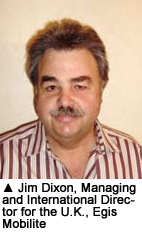 An ITS encompasses a wide spectrum of information and electronic technologies. It requires a comprehensive communication architecture that allows for effective information sharing among agencies and a scalable management platform that ensures equipment interoperability across the system. "An expandable solution that permits hybrid communications technologies to link to a robust backbone, seamless integration of existing systems, immediate support to meet security and safety expectations, coupled with multiple control rooms and a host of multiple traffic control technologies, is desired," said Jim Dixon, Managing and International Director for the U.K., Egis Mobilite.
An ITS encompasses a wide spectrum of information and electronic technologies. It requires a comprehensive communication architecture that allows for effective information sharing among agencies and a scalable management platform that ensures equipment interoperability across the system. "An expandable solution that permits hybrid communications technologies to link to a robust backbone, seamless integration of existing systems, immediate support to meet security and safety expectations, coupled with multiple control rooms and a host of multiple traffic control technologies, is desired," said Jim Dixon, Managing and International Director for the U.K., Egis Mobilite.
Integration and Management
"As security and safety concerns loom large on the collective agenda of citizens and governments, the ability to rapidly disseminate information is of great importance," said Susheela Venkataraman, Director IBSG, India and SAARC, Cisco Systems. Incompatibilities must be resolved to facilitate fast, effective data distribution. This includes interfacing new systems with existing software, hardware and communication systems. While standard Internet protocol (IP) helps make disparate systems interoperable, problems often arise when integrating analog and IP.
Given the huge ITS investments made in existing analog systems, full replacement is rarely affordable. "Any transition from analog to IP depends largely on the lifespan of legacy systems and particular needs for a function that must be IP," said Graeme Scott, Associate Director, IBI Group. "The challenge is interfacing with relatively old systems that have been in operation for years, which need more development and support."
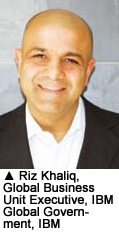 "In many cases, analog systems are still appropriate," Dixon said. "Solutions, however, are made available by telecommunication companies moving into the digital field and are preparing to support only IP."
"In many cases, analog systems are still appropriate," Dixon said. "Solutions, however, are made available by telecommunication companies moving into the digital field and are preparing to support only IP."
Complexity increases when the existing infrastructure consists of disparate IT network elements, inhibiting improvement of the network, Venkataraman said.
IP integration is still in its infancy and differs by region. "It's hard to define the current uptake, but one way to look at it is the consumption of the IP-based GPS systems sold on a regular basis in the region," said Riz Khaliq, Global Business Unit Executive, IBM Global Government, IBM.
The migration to IP is visible. "Traffic-light local controller cabinets with IP interface 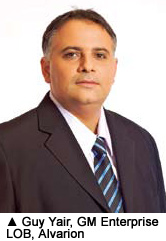 or analog cameras with MPEG-4 decoders allow analog technology to be used over the same IP backbone," said Guy Yair, GM Enterprise LOB, Alvarion.
or analog cameras with MPEG-4 decoders allow analog technology to be used over the same IP backbone," said Guy Yair, GM Enterprise LOB, Alvarion.
Open Architecture
System architecture is fundamental and generally falls into two categories: open source or closed framework. It is either a standardized IP platform or a proprietary solution with a unique source code. "Often, interoperability results from the application not being written in a right framework," Khaliq said. "Even if an API can be created to bridge the gap between two different program languages, each will have unique features that are hard to capitalize on."
Open architecture provides software benefits, allowing customers to use SDKs to integrate with other software-based systems and develop advanced macros orthird-party applications, said Danny Peleg, Director of Transportation Market , Genetec. To provide interoperable services, ERTICO — a nonprofit organization that promotes ITS in Europe — is developing systems and services with open platforms and technologies.
"Sharing information in ITS is done with the federation concept," Peleg said. "A 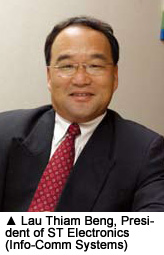 video owned by one entity can be federated to other entities without administering the system, and at the same time allow specific functionalities to be acquired."
video owned by one entity can be federated to other entities without administering the system, and at the same time allow specific functionalities to be acquired."
Multicast distribution, such as point-to-multipoint virtual routing, is formed to meet monitoring and management requirements. It enables footage to be delivered to disparate users, who process the data for their own applications. "This is crucial to international deployments, as there are differing requirements of confidentiality and security between parties and users," Dixon said.
"The database is required to be defined and organized in multiple tiers to facilitate information propagation and distribution to internal and external agencies, media and commuters," said Lau Thiam Beng, President of ST Electronics (Info-Comm Systems).
Common Ground
"Typically, safety-related systems, dealing with speed control, low violation and incident handling, have been given priority for IP upgrades," said Cees De Wijs, Global Director for Transport and Logistics, Logica.
Land transportation systems — taxi, bus and railway — have similar backend office management systems, but each department operates independently. "By having uniform operation throughout, all systems can be streamlined on a single network or integrated with a single standard to eliminate redundancy and cut cost," Khaliq said.
Increasing the use of shared back-office systems is key. Europe is defining standards for communication between traffic control centers and within the ITS systems, De Wijs said. Control centers are able to share data and manage each other's tasks with the same underlying software.
"In France, data from disparate systems can be streamed back to the same command center for agencies to coordinate control actions," said Pascal Lemonnier, ITS Business Development Manager, CS Group.
"The transfer of people and goods between multiple modes of transport has  grown rapidly in the last decade," Venkataraman said. As integral transportation systems, facilitating data integration at transit centers and mobility hubs can be starting points.
grown rapidly in the last decade," Venkataraman said. As integral transportation systems, facilitating data integration at transit centers and mobility hubs can be starting points.
"A middleware layer, like an application server, could be placed on top of legacy systems, to pull information based on existing infrastructure," Khaliq said. The transcoding engine provided by IBM facilitates information transfer to any device and user interface.
There are many things that can be done right off the bat, Khaliq said. Triangulation algorithms and anonymous cell phone volume probing allow users to take advantage of legacy systems. "Without a new system setup, examining the number of cell phones used on certain road gives an idea of the congestion level," he said.
Sufficient Technology
"With a whole ITS package to be delivered under a single contract, ensuring integration and interoperability is much easier than piecemeal deliveries," Dixon said. However, it must accommodate existing contract arrangements. Dixon explained that changing start dates often complicate delivery, when implementation starts before agreements and standards are established.
In several European countries, progress is specified and ITS architecture is mapped out at the preliminary stages. Governments create a long-term development and tender process to ensure adequate technology transfer and maintain up-to-date specifications. "A competitive dialog procurement process between the public sector and industry players is set up to ensure that the right level of requirements and feasible migration are predefined," De Wijs said. Dividing the contract into area-specific packages provides better control of the best available solutions.
Upon purchase, a contract should be divided and awarded in a number of lots. "For each delivery, parties involved can make sure that best-of-breed technologies have been applied," De Wijs said.
This invariably leads to integration. "However, there is the tendency to favor best-of-breed technology over a few challenges in integration," De Wijs said.
City authorities are considering information integration at the initial planning stage, as lack of broadband infrastructure and inadequate bandwidth makes any kind of 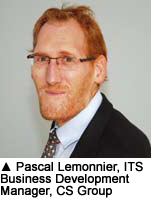 integration difficult in India, Venkataraman said. "Once the enabling infrastructure is in place, the functionality could be added even at a later date."
integration difficult in India, Venkataraman said. "Once the enabling infrastructure is in place, the functionality could be added even at a later date."
"Careful design at the foundation levels — the communications solution — makes it possible to ensure that the installed physical infrastructure can be upgraded as new software comes along," said Dixon. "An Ethernet-based fiber optic backbone that is initially built around gigabyte switches will be capable of upgrading to terabyte networks, as technology and software become available."
Technology replacement is restricted to contract terms and conditions, depending on the function requirements and product lifespan. No single regime is optimal for all and budget constraints affect what can be done.
Maintenance
The nature of the product determines what maintenance is required and how it is implemented, Scott said. Maintenance and replacement should be secured with sufficient budget during procurement, noted Martial Chevreuil, Executive VP, Strategic Policy and Development, Egis Mobilite.
However, current low-bid systems of procurement often fail to meet requirements. "The budgetary allocation for city management is one of the prime reasons, in addition to low awareness," said Niju V., Deputy Director for South Asia and Middle East, Automation and Electronics, Frost & Sullivan.
Often, inadequate budgets are set without accounting for the operation lifecycle, which only cover procurement of the initial systems, Dixon said.
Long-term sustainability goals are priorities instead of price alone during the tender process. "The concept of TCO has gained increasing attention by taking maintenance support and the cost of future operation into consideration," De Wijs said.
In France, technical capability and after-warranty services are first priorities. "A good combination of technical capability, service and prices is preferred," Lemonnier said.
"While more integrated, supported solutions should be featured in procurement , inadequate support and staffing level lead to management and maintenance problems too," noted Dixon. "Ensuring a competent level of experience for efficient technical and service delivery presents challenge."
Running preventive maintenance programs to minimize critical failures reduce downtime. "Verifying connections and examining critical equipment should be done on a monthly basis to ensure reliable performance," Lemonnier said.